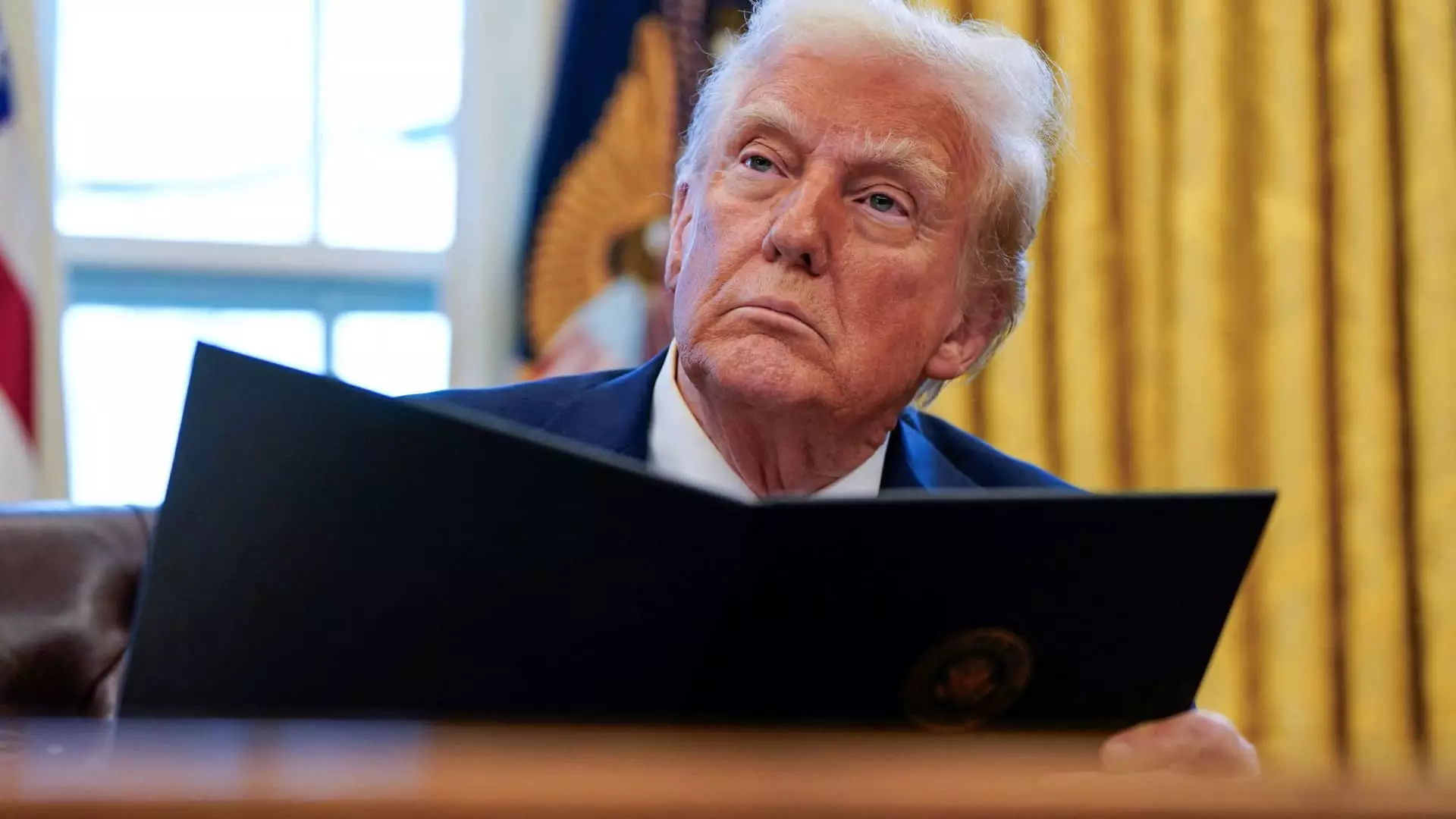The announcement by the White House that President Donald Trump intends to impose significant tariffs on U.S. trading partners, particularly Mexico, Canada, and China, marks a pivotal moment in American trade policy. This decision is not just an economic maneuver; it embodies a complex strategy that intertwines trade, immigration, and drug control. By analyzing these developments, we can gain insight into the broader economic implications and the potential consequences that lie ahead.
Tariff Structure and Immediate Market Reactions
The specifics of the tariffs—25% on goods from Mexico and Canada, and a 10% levy on Chinese products—underscore a significant shift in the United States’ approach to international trade. This shift was confirmed by White House Press Secretary Karoline Leavitt, who emphasized that these tariffs are aimed at counteracting the flow of illegal fentanyl into the United States. This rhetoric illustrates how trade policy is increasingly being used as a tool to address domestic societal issues, heightening the stakes involved.
The immediate reaction from the financial markets was telling. Following the announcement, the Dow Jones Industrial Average experienced a notable drop of over 300 points, signifying a loss of confidence among investors. Such declines in stock indices reveal the apprehension in the market toward potential trade wars, which usually exacerbate uncertainty and lead to fluctuations in investment. As multiple sectors brace for impact, the S&P 500 and Nasdaq Composite also reflected losses. This response indicates that stakeholders are wary of the long-term implications of a trade policy grounded in punitive measures rather than cooperative negotiation.
The Trump administration’s positioning of tariffs as “promises made and promises kept” suggests an attempt to solidify political support among his base, especially in light of the ongoing challenges surrounding immigration and drug trafficking. Trump’s trade advisor, Peter Navarro, framed the discussion around the upcoming Super Bowl, drawing a striking metaphor between the capacity of the Superdome and the number of fentanyl-related deaths in America. This analogy seeks to evoke emotional resonance among the populace, framing the tariffs as a moral imperative rather than merely an economic strategy.
However, using tariffs as a bargaining tool can be a double-edged sword. While Trump aims to leverage these economic policies to enact desired changes regarding drug trade and immigration, the effectiveness of such an approach is debatable. Critics argue that punitive tariffs could harm U.S. consumers and businesses by driving up prices for imported goods, ultimately negating any potential benefits intended through these measures.
Concerns about inflation resurfaced as analysts began to consider how these tariffs could amplify price pressures in an already fluctuating economic climate. The Commerce Department had reported a slight rise in inflation rates, causing some economists to worry about the effects of tariffs compounding existing economic challenges. Fed officials, including Michelle Bowman and Austan Goolsbee, have stated that they are carefully observing the ramifications of these tariffs and their potential to provoke retaliation from trading partners.
The Federal Reserve’s proactive stance underscores the interconnectivity of trade policies and monetary policy. Should these tariffs incite retaliatory measures from other countries, the consequences could lead to a cycle of escalated trade tensions, which might stifle the economic recovery efforts that have been underway following previous downturns. The Fed’s ability to navigate this complex situation will be critically important to maintaining economic stability.
The imminent implementation of these tariffs marks a defining moment in U.S. trade relations, steeped in ambition yet fraught with risks. As Trump’s administration seeks to utilize trade policy to achieve broader political goals, the resulting economic landscape could become turbulent. Stakeholders in various sectors must brace for volatility and prepare for potential impacts on pricing, trade agreements, and cooperative diplomatic relations.
In the end, the efficacy of these tariffs, both in economic terms and in achieving political aims, remains to be seen. The decisions made in the coming days will not only influence the immediate economic scenario but will also set the course of U.S. international trade relations for years to come.

Leave a Reply